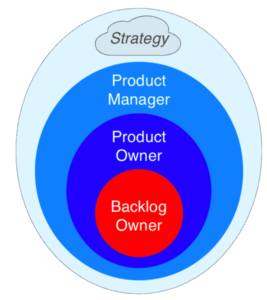One specific antipattern in Agile software development involves a product owner (or product manager) morphing into a “backlog owner.” So, what exactly is a “backlog owner?” To understand that term better, let’s first look at what a product owner does.
Per the Scrum Guide, the job of the product owner is to maximize the value of the product built by the development team. More specifically, s/he is responsible for …
- Clearly expressing product backlog items.
- Ordering the items in the product backlog to best achieve goals and missions.
- Optimizing the value of the work the development team performs.
- Ensuring that the product backlog is visible, transparent, and clear to all.
- Verifying that the backlog reflects what the Scrum team will work on next.
- Ensuring the development team understands items in the product backlog to the level needed.
Based on this list, a lot of the product owner’s work does revolve around the backlog. However, I would expand the role’s responsibilities a bit to include things like:
- Articulating product vision to the team.
- Understanding current product use, jobs to be done, personas, etc. at a deep level.
- Representing desired product goals and outcomes to the team.
- Working closely with the team during sprint planning and execution.
- Making decisions around design and any required trade-offs related to the technical implementation.
- Accepting the work product.
Who Is the Backlog Owner?
With this definition of the PO role in mind, what exactly does a backlog owner do? A backlog owner focuses on maintaining the backlog, gathering requirements, translating them into stories, and shepherding them through sprints. He may not have a deep understanding of the product and serves as more of an order taker or story scribe. In actuality, the backlog owner is more of a glorified business analyst (no offense!) and has no real decision-making power.
We can probably agree that this type of role isn’t very fulfilling and is quite far from what a product owner is supposed to do. Nevertheless, product owners end up in this role all the time.
Is it the fault of the person functioning in this role that he’s not really an empowered product owner? Experience and skills may have something to do with it, but more often it’s the person’s organizational environment that’s robbing him of the necessary freedom and responsibilities. Maybe the culture is called “Agile,” but is actually more of a traditional command-and-control environment.
Product Owner vs. Product Manager
To be clear, the role of the product owner as traditionally described is rooted more in internal IT and “inward-facing” applications. When Scrum was conceived, product management as a function and craft was not well-developed. True software product management has only come about due to the proliferation of (consumer-facing) software and “software eating the world”(for more on how product management came about and its stages of evolution, check out The Evolution of Product Management).
Many product professionals have written about the difference between product owners and product managers; for an example, see this great post by Melissa Perri. In my view, product owner is a role while product manager is an actual career with the responsibilities being a superset of what a PO does. Product managers typically exist in organizations with external-facing, commercial B2B or B2C applications or SaaS products. In fact, I would even argue that there’s such a thing as a product management mindset. Just looking at responsibilities, however, the product manager adds the following tasks to the product owner:
- Engaging with users and customers (and prospects)
- Market research
- ユーザー調査
- Defining and tracking product metrics
- Maintaining a product roadmap
- Engagement with other departments
- Executive interface
Wait! Aren’t there a few things still missing? Even this definition of the product manager may be a little narrow for those who want to truly be the “CEO of the Product.” A number of strategic aspects remain unaccounted for, including:
- Product vision, strategy, and positioning
- 価格
- Roadmap definition (vs. maintenance)
- Go-to-market strategy and execution
- Revenue goals/P&L responsibilities.
Tactics vs. Strategy
That said, while many product managers would like to have more (or even all) of these responsibilities, the current reality is that they usually don’t. According to the State of Product Leadership 2019 report, their role tends to be slanted more towards tactics rather than strategy in many organizations. Absorbing those responsibilities does not necessitate a different title; it is more about how much an organization wants to empower its PMs. However, it is not uncommon for Product Directors, VPs, or CPOs to take on these more strategic tasks.
Interestingly, according to that report, PMs want even more responsibilities. In fact, job satisfaction goes up slightly as one moves from individual contributor to manager (and above).
Here’s how I would represent the different roles using a visual:

To sum up, the role of the so-called “backlog owner” is hamstrung and probably not where most of us want to be in our product-related careers. The role of a true Agile product owner is certainly more balanced and fulfilling. If you’re dealing with commercial, externally-facing products, you’ll probably want to be functioning more as a product manager. Finally, you might be able to also absorb some or all of the more strategic responsibilities as well, given the appropriate desire, skills, and organizational circumstances.


